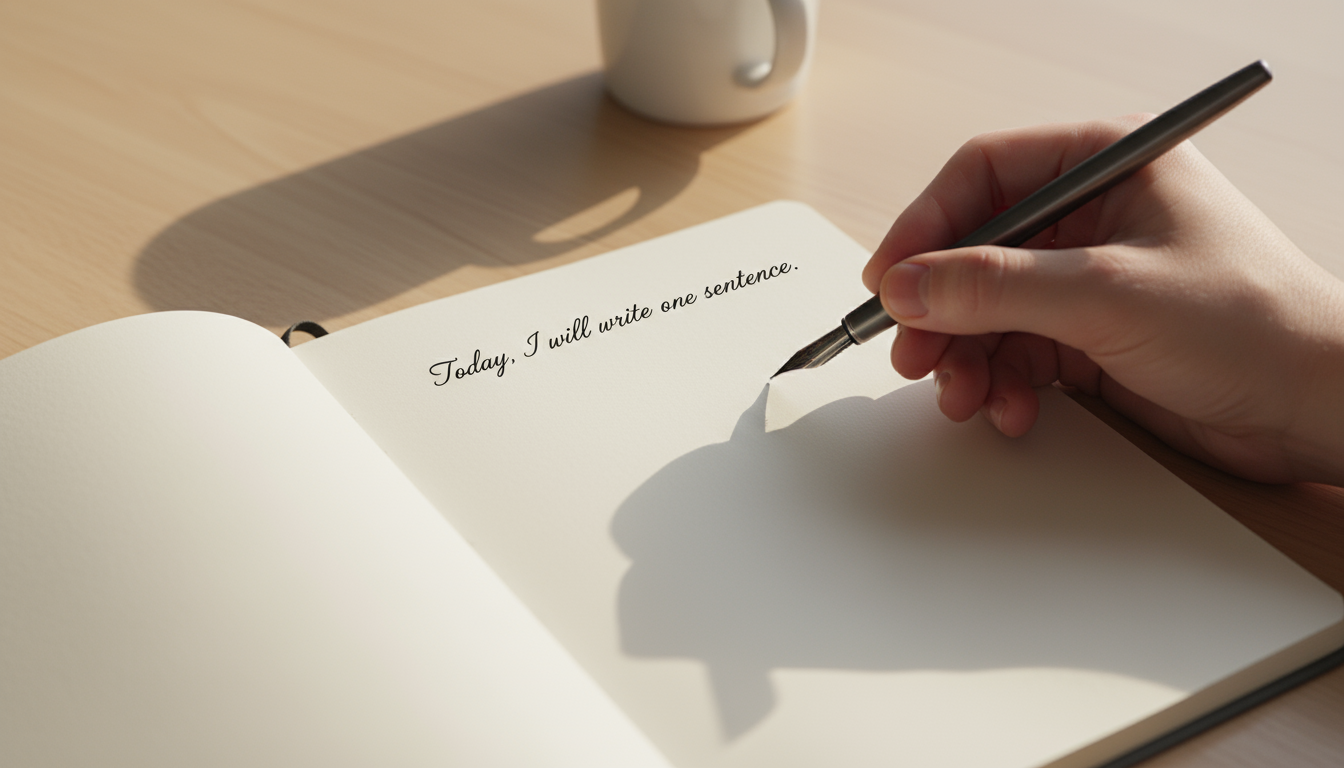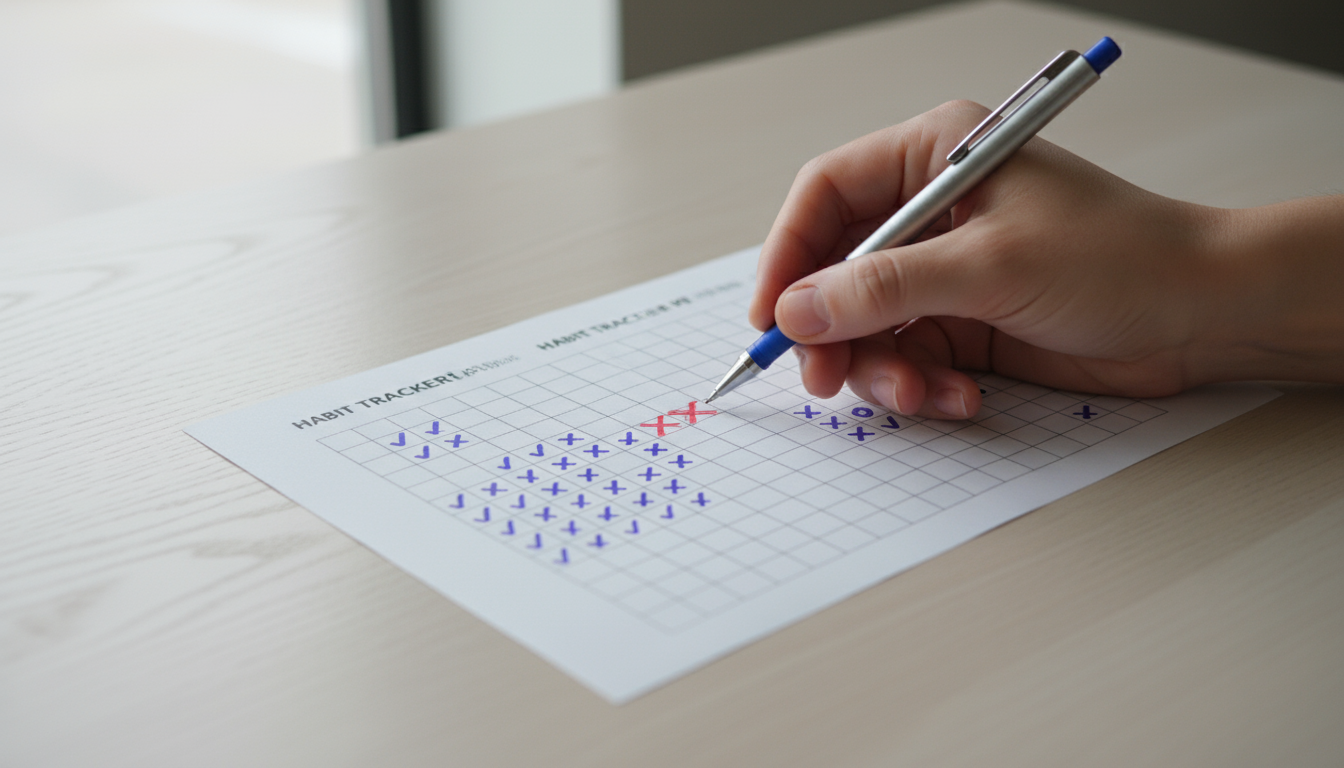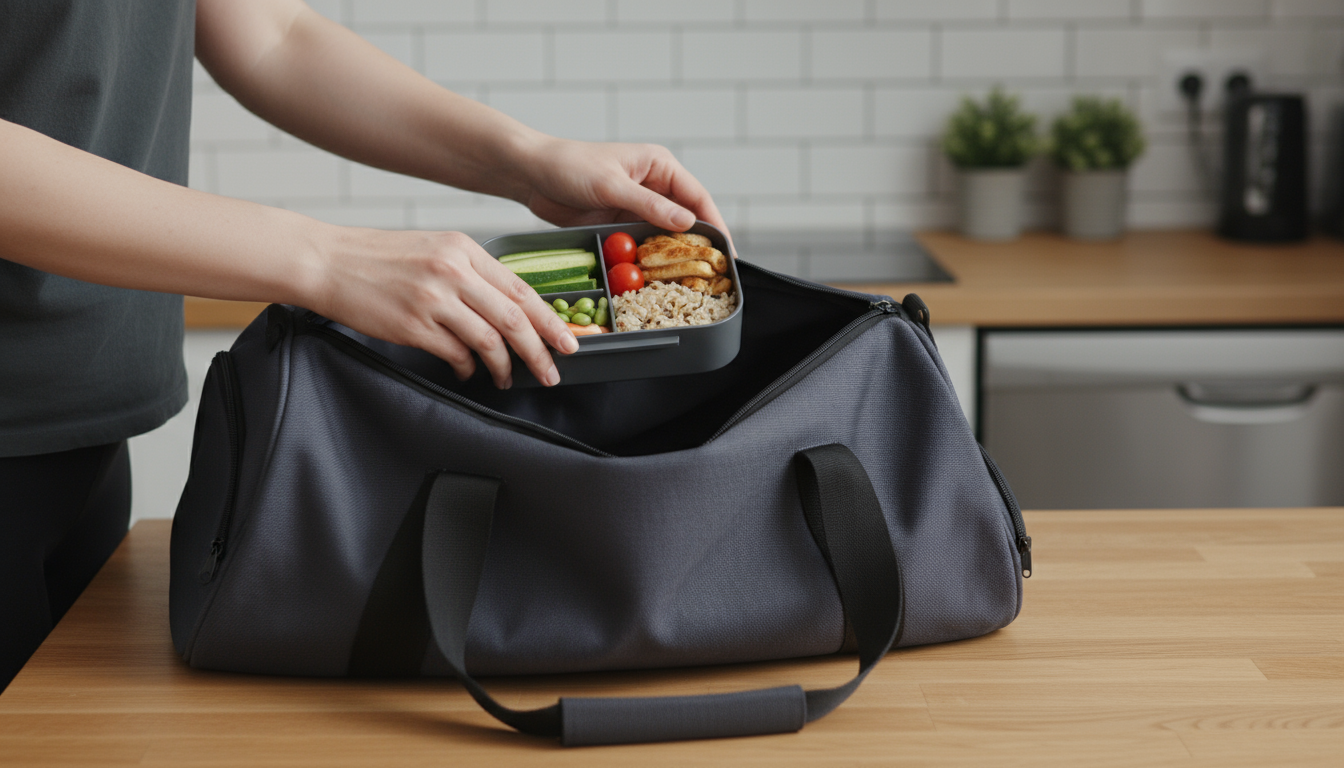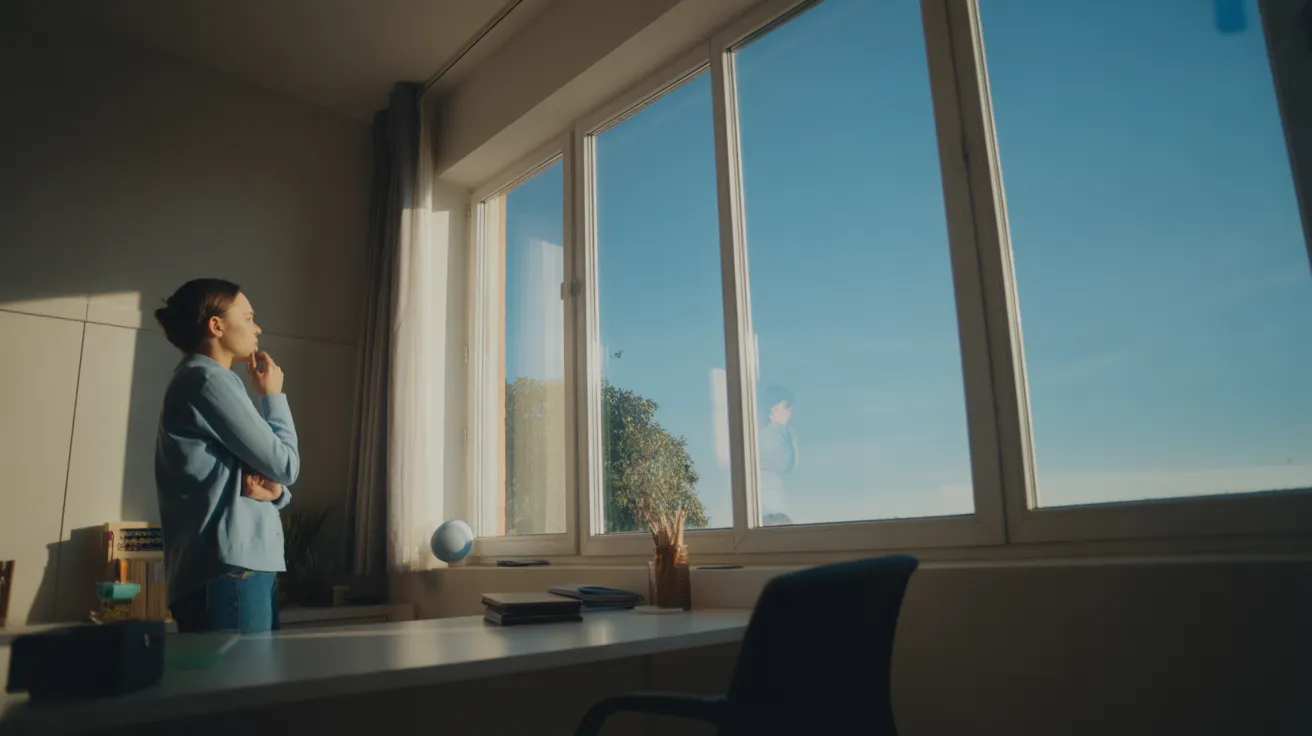
You have a goal. Maybe it’s a big, audacious one, like writing a novel or running a marathon. Or perhaps it’s a quieter, more personal ambition, like reading more books or starting a daily meditation practice. You start with a surge of motivation. You buy the new running shoes, the fancy journal, the meditation app. For a few days, maybe even a few weeks, you’re unstoppable. You are the embodiment of willpower.
And then, life happens. Especially if you live in a bustling urban environment, your willpower is a resource under constant siege. A demanding project at work drains your mental energy. The endless notifications on your phone fracture your focus. The sheer number of choices you face from the moment you wake up—what to wear, what to eat, which train to catch—leads to decision fatigue. Suddenly, that ironclad resolve you started with feels more like a rusty hinge. The running shoes gather dust. The journal stays closed. Your goal feels further away than ever.
If this sounds familiar, please know you are not alone, and it is not a personal failing. Relying on willpower alone to achieve your goals is like trying to build a skyscraper with only a hammer. It’s a useful tool, but it’s not the foundation. The foundation, the one simple habit that underpins all successful goal setting, is not about grand gestures or superhuman discipline. It’s about something much quieter, much gentler, and infinitely more powerful: the habit of tiny, consistent action.
In this article, we won’t ask you to overhaul your life overnight. We won’t prescribe a rigid, demanding schedule that leaves no room for being human. Instead, we’re going to explore a sustainable method for building the daily habits for success. We will show you how to design a system that works with your brain’s natural wiring, not against it. We will give you the tools to make progress on your most important goals, one small, nearly effortless step at a time. This is how you build durable habits without burning out.
📚 Table of Contents
- The Science of Automaticity: How Habits Really Work
- How to Design a Habit That Sticks
- Start with a Minimum Viable Action
- Conduct a Friction Audit
- Engineer Your Environment for Cues
- Introduce Gentle Accountability
- What to Do When You Fall Off Track (Because You Will)
- The “If-Then” Plan for Relapse
- The Psychology of Streaks: Friend and Foe
- The Two-Day Rule and Resetting with Grace
- Daily Habits for Success in Action
- Your Questions on Building Habits for Goals, Answered
- How long does it really take to build a habit?
- How do I maintain habits when I travel or my routine is disrupted?
- What should I do if my progress plateaus?
- Can I build multiple habits for my goals at the same time?
- Your First Step Towards Lasting Change

The Science of Automaticity: How Habits Really Work
Before we can build better habits, we need to understand what a habit truly is. We often think of habits in terms of their outcome—good habits, bad habits. But fundamentally, a habit is a behavior that has been repeated enough times to become automatic. It’s a mental shortcut your brain creates to save energy. Think about brushing your teeth or driving a familiar route to work. You don’t have to consciously think through every single step; your brain runs a pre-programmed script.
This process of automation is governed by a simple neurological pattern that scientists call the habit loop. Understanding this three-part framework is the first step to mastering your daily habits. In plain English, the loop consists of:
1. The Cue: This is the trigger that tells your brain to go into automatic mode and which habit to use. It could be a time of day (morning coffee), a location (your desk), an emotional state (feeling stressed), or the action that immediately precedes it (finishing dinner).
2. The Action: This is the actual behavior or routine itself—the habit you perform. It can be physical (doing a push-up), mental (practicing gratitude), or emotional (automatically worrying when you see a news alert).
3. The Reward: This is the final step, which tells your brain that this particular loop is worth remembering for the future. The reward satisfies a craving. For a bad habit like stress-eating, the reward is the immediate comfort from the food. For a good habit like exercise, it might be the endorphin rush or a sense of accomplishment.
When the reward is satisfying, your brain links the cue to the action more tightly. Over time, this connection becomes so strong that the cue alone is enough to trigger an almost irresistible urge to perform the action. This is why it’s so hard to resist checking your phone (cue) when you hear a notification (reward: social connection or novelty).

Beyond Actions: The Power of Identity-Based Habits
Understanding the habit loop is technically sufficient to build a habit. But to build a habit that lasts, one that becomes a genuine part of you, we need to add another layer: identity. Many of us approach habits for goals with an outcome-based mindset. For example: “I want to lose 20 pounds” (the outcome), so “I will go to the gym three times a week” (the action). This can work for a while, but it’s fragile. If you miss a week at the gym or the scale doesn’t move, your motivation plummets because you’re not getting the outcome you wanted.
A more powerful approach is to build identity-based habits. This means focusing on who you want to become, not just what you want to achieve. The goal isn’t to write a book; it’s to become a writer. The goal isn’t to run a marathon; it’s to become a runner. The goal isn’t to meditate every day; it’s to become a mindful person.
This small shift in perspective is profound. Every time you perform the action, you are casting a vote for your new identity. When you write one sentence, you are a writer. When you put on your running shoes and walk around the block, you are a runner. The action is no longer just a task to be checked off; it is an affirmation of the person you are becoming. This intrinsic reward—the feeling of being consistent with your desired self—is far more motivating and durable than any external outcome. Your goal becomes to simply reinforce that new identity, day after day.

How to Design a Habit That Sticks
With a clear understanding of the habit loop and the power of identity, we can now move from theory to practice. Building the best habits for goal setting isn’t about finding a “perfect” routine; it’s about designing a system that makes the right actions as easy as possible. Think of yourself as an architect, and your behavior is the structure you’re building. A solid structure needs a strong foundation and smart design.

Start with a Minimum Viable Action
One of the most common reasons we fail to stick with new habits is that we make them too big, too soon. Our initial motivation tricks us into believing we can go from zero to one hundred overnight. To counteract this, you must start with what we call a minimum viable action. This is the smallest, most laughably easy version of your desired habit—an action so simple you can’t say no to it.
If your goal is to “read more,” your minimum viable action isn’t to read a chapter a day. It’s to read one page. If your goal is to “meditate for 20 minutes,” it’s to sit and breathe for 60 seconds. If you want to “write a novel,” it’s to write one sentence. The point is not to make dramatic progress on day one. The point is to show up. You are casting a vote for your new identity. Anyone can read one page. Anyone can breathe for a minute. By starting this small, you remove the friction of getting started and make it nearly impossible to fail, which builds the momentum you need for consistency.

Conduct a Friction Audit
Friction is the collection of small obstacles and bits of resistance that stand between you and your desired action. The more friction there is, the less likely you are to do something. Your job as a habit architect is to strategically decrease friction for your good habits and increase it for your bad habits. This is one of the most effective tools for changing behavior without relying on willpower.
To decrease friction for a good habit, ask yourself: “How can I make this 20 seconds easier to start?” If you want to go for a run in the morning, lay out your running clothes, shoes, and headphones the night before. If you want to drink more water, fill up a large water bottle and place it on your desk before you start work. If you want to practice guitar, take it out of its case and put it on a stand in the middle of your living room. Each small adjustment removes a decision point and a physical barrier, making the action flow more naturally.

Engineer Your Environment for Cues
Your environment is one of the most powerful and invisible forces shaping your behavior. The cues that trigger your habits are all around you. Instead of fighting your environment, redesign it to serve your goals. If you want to build a reading habit, don’t leave your phone on your nightstand; replace it with a book. The book becomes the cue. If you want to eat healthier snacks, don’t leave cookies on the counter; place a bowl of fresh fruit there instead. The fruit becomes the cue. The most successful people at building daily habits for success don’t necessarily have more willpower; they have simply created environments where the desired behavior is the most obvious and easiest choice.

Introduce Gentle Accountability
Accountability can be a powerful motivator, but it often carries a negative, punitive connotation. A gentler, more effective approach is to simply have a way of making your actions visible. This can be as simple as getting a calendar and putting an “X” on each day you complete your minimum viable action. The goal isn’t to create an unbroken chain but to have a visual record of your effort. Another method is to use habit stacking. This technique, popularized by author James Clear, involves attaching your new desired habit to a pre-existing one. The formula is: “After [current habit], I will [new habit].” For example: “After I brush my teeth in the morning, I will do two minutes of stretching.” The existing habit (brushing your teeth) acts as a powerful cue for the new one, automating the decision-making process.

What to Do When You Fall Off Track (Because You Will)
Let’s be perfectly clear: you will miss a day. Life will get in the way. You’ll get sick, you’ll travel, you’ll have an overwhelmingly busy day. Perfection is not the goal, and the belief that it is is precisely why so many people give up. A single misstep doesn’t make you a failure; it makes you human. The most important part of building durable habits for goals isn’t perfect adherence, but rather how quickly and kindly you get back on track.

The “If-Then” Plan for Relapse
Instead of hoping you’ll never stumble, plan for it. This is a psychological strategy known as an “implementation intention,” or more simply, an “if-then” plan. You anticipate a potential obstacle and decide, in advance, how you will respond. This removes the need for in-the-moment decision-making when you’re likely feeling tired or discouraged.
For example: If I get home late from work and feel too tired to do my 15-minute workout, then I will do one minute of stretching next to my bed. If I don’t have time to write my 500 words in the morning, then I will write one sentence during my lunch break. This plan ensures that even on your worst days, you can still perform your minimum viable action. You can still cast a vote for your desired identity. A bad day doesn’t have to become a bad week.

The Psychology of Streaks: Friend and Foe
Tracking a streak—marking off consecutive days of success on a calendar—can be incredibly motivating. It provides a visual representation of your progress and can create a powerful incentive to “not break the chain.” For many, this is an excellent tool to build initial momentum. However, streaks can also be a psychological trap. They can foster an all-or-nothing mindset. The moment the streak is broken, it can trigger a wave of guilt and frustration, leading people to abandon the habit altogether in what is known as the “what-the-hell effect.” (“Well, I’ve already broken my diet, so I might as well eat the whole pint of ice cream.”)
If you use streaks, see them for what they are: a helpful game, not a moral judgment. A broken streak doesn’t erase all the progress you’ve made. The 30 consecutive days you exercised still count, even if day 31 didn’t happen. The goal is consistency over the long term, not an unbroken chain of perfection. The research on habit formation, much of which is supported by institutions like the National Institutes of Health (NIH), points toward frequency, not perfection, as the key driver of automaticity.

The Two-Day Rule and Resetting with Grace
A more flexible and forgiving mantra is the “Two-Day Rule.” It’s simple: never miss twice in a row. Missing one day is an accident. Missing two days is the start of a new, undesirable habit. This rule provides a clear, non-negotiable directive for getting back on track immediately, but it also builds in the grace and flexibility needed for a real human life. It allows for off days without letting them spiral. When you do miss a day, the most important action is your next one. Don’t waste energy on guilt or shame. That emotional weight just adds friction to getting started again. Instead, acknowledge it, and focus all your energy on making sure you show up tomorrow, even if it’s just for your minimum viable action. That is how you reset with grace.

Daily Habits for Success in Action
Theory is valuable, but seeing these principles applied in a real-world context makes them tangible. Here are two short, worked examples of how you might design routines for common goals, written in prose to illustrate the flow and mindset.

Example 1: The Evening Wind-Down Routine
Sarah wanted to improve her sleep and reduce evening anxiety. Her goal was to become a calm and well-rested person. She decided against a massive, complicated routine. Her minimum viable action was to simply plug her phone in to charge across the room, not on her nightstand. This small act created friction for late-night scrolling. To build from there, she used habit stacking. Her cue was finishing brushing her teeth. The stack looked like this: “After I brush my teeth, I will plug my phone in across the room.” Once that was automatic, she added the next layer: “After I plug in my phone, I will read one page of a physical book.” She engineered her environment by placing a book and a lamp on her nightstand, making it the most obvious thing to do next. On nights she felt too tired, her “if-then” plan was: “If I’m too tired to read, then I will just open the book to my bookmark.” She wasn’t aiming for a perfect streak, just consistency. Over a month, this simple, stacked habit evolved into a peaceful 15-minute routine of reading that signaled to her brain it was time to sleep, reinforcing her identity as a calm person.

Example 2: The Morning Focus Primer Routine
Mark struggled with a reactive start to his day, immediately checking emails and news, which left him feeling scattered. He wanted to become a focused and proactive person. His biggest challenge was the powerful cue of his phone alarm, which led directly to checking notifications. He started by creating friction: he moved his phone charger to the kitchen. His new cue became the sound of his coffee brewing. He used habit stacking: “While my coffee is brewing, I will not look at my phone.” That was it. Just five minutes of tech-free silence. His minimum viable action was to just stand there and listen to the machine. Once that felt normal, he added: “While my coffee is brewing, I will write down my single most important task for the day on a sticky note.” He designed his environment by leaving a pen and a pad of sticky notes right next to the coffee maker. This tiny habit didn’t add more than 30 seconds to his morning, but it completely changed his trajectory. He was no longer starting his day on someone else’s terms. He was casting a vote for his identity as a focused person before the digital world had a chance to interfere.

Your Questions on Building Habits for Goals, Answered
As you begin this journey, questions will naturally arise. Here are answers to some of the most common ones we hear, designed to give you clarity and confidence as you implement these strategies for your own goal setting.

How long does it really take to build a habit?
You may have heard the popular myth that it takes 21 days to form a habit. While a catchy number, research shows it’s much more variable. A landmark 2009 study found that, on average, it takes about 66 days for a new behavior to become automatic. However, the range in the study was huge—from 18 days to 254 days. The takeaway is this: the time it takes depends on the complexity of the habit, the person, and the circumstances. Don’t get discouraged if a habit doesn’t feel automatic after three weeks. Focus on consistency, not the timeline. The real goal is to make the process so easy that you’re happy to do it indefinitely, whether it becomes automatic on day 20 or day 200.

How do I maintain habits when I travel or my routine is disrupted?
Disruptions are a primary reason habits fall apart. The key is to have a plan. First, scale your habit down even further. If your normal habit is a 20-minute workout, your travel habit might be 5 minutes of bodyweight exercises in your hotel room. If you write 500 words a day, your vacation habit might be to write one paragraph in a journal. The goal is to maintain the identity, not the intensity. Second, tie your habit to a universal cue that will exist even when you travel. For example, instead of stacking your habit after “making my morning coffee at home,” stack it after a more general cue like “after my first sip of a hot beverage” or “right after I put my shoes on.”

What should I do if my progress plateaus?
Plateaus are a normal and expected part of any long-term endeavor. First, recognize it as a sign of progress—you’ve been consistent enough to reach a plateau! Often, a plateau in a habit means the reward is no longer as satisfying as it once was. You might need to introduce some novelty. If you’re bored with your running route, try a new one. If you’re tired of meditating in silence, try a guided meditation app. You can also slightly increase the difficulty. If you’ve been doing your minimum viable action for months, maybe it’s time to graduate from “read one page” to “read for five minutes.” The key is to make a small, intentional change to keep the process engaging without making it overwhelming.

Can I build multiple habits for my goals at the same time?
While it’s tempting to overhaul your life all at once, it’s generally more effective to focus on one, single keystone habit at a time. Your self-control and decision-making energy are finite resources. By channeling all your energy into making one small habit automatic, you increase your chances of success dramatically. Once that first habit is firmly established and requires little to no willpower, you can then use it as a foundation to stack a second habit. For instance, once “going to the gym” is automatic, you can then focus on “packing a healthy lunch.” Trying to do both at once divides your focus and makes it more likely that neither will stick. Choose the one habit that will have the most positive ripple effect on your life and give it your full attention first.

Your First Step Towards Lasting Change
We’ve covered the psychology of why willpower fails, the simple mechanics of the habit loop, and a practical, four-part system for designing behaviors that last. We’ve talked about the importance of an identity-based approach and the necessity of planning for imperfection with grace. The simple habit you need to achieve your goals is not a single, magical action. It is the meta-habit of building small, consistent actions into your life with intention and self-compassion. The information in this article can be transformative, but only if you put it into practice.
True change doesn’t come from reading; it comes from doing. Your journey starts not next month or next week, but with a single, tiny decision today. Here are your next steps. Choose one and commit to it for the next seven days.
1. Choose One Goal and Define Your Identity: Pick one area you want to improve. Instead of focusing on the outcome, frame it as an identity. Not “I want to get in shape,” but “I am the kind of person who moves their body every day.” Write it down.
2. Define Your Minimum Viable Action: What is the absolute smallest action you can take to affirm that identity? Make it so easy it feels ridiculous. Meditate for one minute. Do one push-up. Write one sentence. Put one dish in the dishwasher. This will be your only goal for the first week.
3. Identify a Cue and Use Habit Stacking: Where will this new, tiny habit fit into your existing day? Find a reliable habit you already do (like making coffee or brushing your teeth) and stack your new action right after it. Write down your stacking statement: “After [current habit], I will [new minimum viable action].”
That’s it. Don’t worry about the next 30 days or the next year. Just focus on showing up for the next seven days. Cast a vote for the person you want to become. One small, consistent step at a time is how you build a life that is truly aligned with your deepest goals. You have the blueprint. Now, go lay the first brick.
Disclaimer: The information provided in this article is for informational purposes only and is not intended as a substitute for professional medical or psychological advice, diagnosis, or treatment. Always seek the advice of your physician or other qualified health provider with any questions you may have regarding a medical or mental health condition. For more information on the science of behavior change, you can explore resources from organizations like the American Psychological Association.






